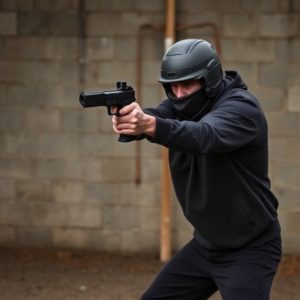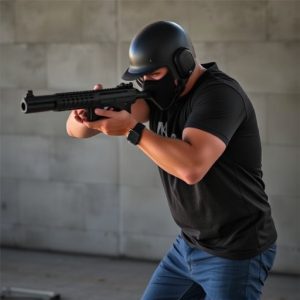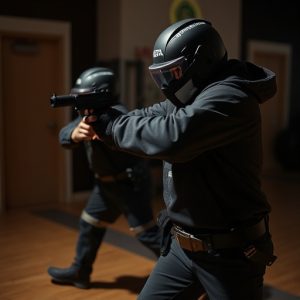Projectile vs Contact Stun Weapons: Pros, Cons & Top Manufacturers
Projectile stun weapons like stun guns and tasers offer a strategic advantage in non-lethal force ap…….
Projectile stun weapons like stun guns and tasers offer a strategic advantage in non-lethal force applications due to their range, allowing users to disable targets from a distance. Most reliable stun gun manufacturers invest heavily in R&D to ensure product effectiveness and reliability, making them valuable tools for law enforcement and self-defense despite potential challenges with close combat and accuracy. These devices temporarily incapacitate targets through high-voltage electric charges, disrupting motor functions, and are popular for crowd control, personal protection, and emergency situations due to safety features like automatic shut-off mechanisms and durable construction.
In the realm of personal protection, stun weapons offer a non-lethal alternative to traditional firearms. This article explores two primary categories: projectile and contact stun devices. Projectile weapons, such as Tasers and pepper ball guns, provide long-range incapacitation with reduced risk to users, but face limitations in close quarters. Contact stun tools, like electroshock batons and body-worn devices, offer immediate impact for close-range scenarios, yet have shorter effective ranges. Discovering the strengths and weaknesses of these weapons can help individuals make informed choices from the most reliable stun gun manufacturers.
- Projectile Stun Weapons: Advantages and Disadvantages
- – Definition and working principle of projectile stun weapons
Projectile Stun Weapons: Advantages and Disadvantages
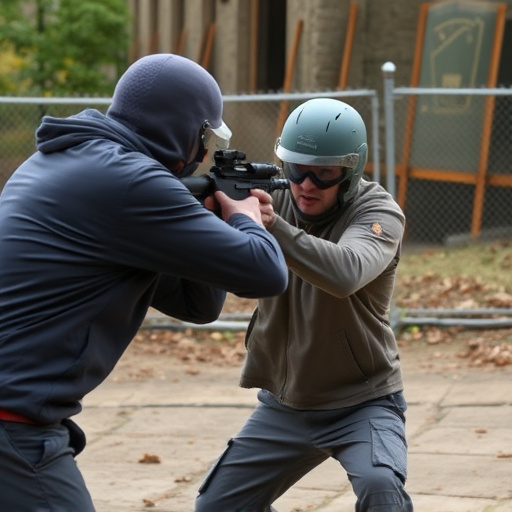
Projectile stun weapons, such as stun guns or tasers, offer a unique approach to non-lethal force compared to traditional contact-based stun devices. One of their primary advantages is range; they allow users to disable targets from a distance, providing a strategic advantage in various scenarios. This feature is particularly valuable for law enforcement and security personnel, enabling them to de-escalate situations without closing in on potentially dangerous individuals. Moreover, many modern stun guns are designed with advanced technology, ensuring their effectiveness and reliability; some of the most reliable stun gun manufacturers invest heavily in research and development, creating products with consistent performance.
However, there are disadvantages to consider. The primary drawback is that projectile stun weapons may not be as effective in close-quarters combat or against determined resistors. Additionally, range and accuracy can vary based on factors like the environment (wind, terrain) and the user’s skill level. Despite these challenges, the ability to subdue a target from a safe distance makes them a valuable tool for self-defense and law enforcement applications.
– Definition and working principle of projectile stun weapons
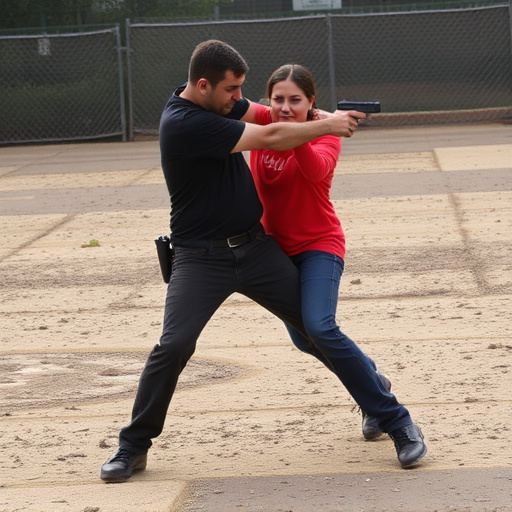
Projectile stun weapons, often referred to as stun guns or non-lethal firearms, are devices designed to temporarily incapacitate a target without causing permanent harm. They function by projecting a high-voltage electric charge towards the intended subject, disrupting their motor functions and leading to muscle spasms, disorientation, and temporary paralysis. These weapons fire either a dart or a small projectile imbued with an electrical probe that makes contact with the target’s skin, delivering a powerful electric shock.
The most reliable stun gun manufacturers prioritize safety features, such as automatic shut-off mechanisms and built-in safety switches, to minimize the risk of accidental discharge. They also focus on durability, ensuring these weapons can withstand harsh conditions and repeated use. These devices are popular among law enforcement agencies and self-defense enthusiasts alike, offering a non-lethal alternative for crowd control, personal protection, and emergency situations.
In the ongoing pursuit of personal safety, both projectile and contact stun weapons offer distinct advantages. Projectile stun guns provide a non-lethal way to disable an assailant from a distance, making them popular choices for self-defense among those seeking long-range deterrents. However, their reliance on mechanical force and flight time limits their effectiveness in close quarters. Conversely, contact stun devices excel in close combat, instantly incapacitating attackers through direct electrical impulses. When choosing the best defense, considering factors like range, power, and portability is key. Reputable manufacturers like those from our list of most reliable stun gun makers can provide valuable insights into which type aligns best with individual needs, ensuring individuals are equipped to protect themselves in various scenarios.
